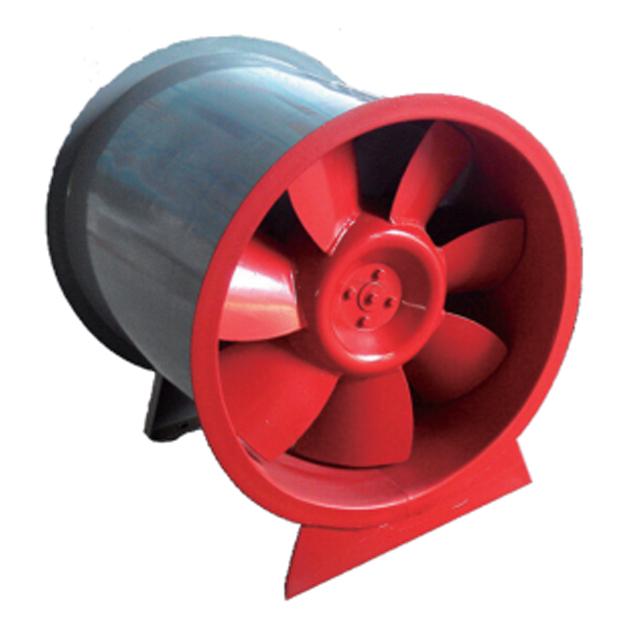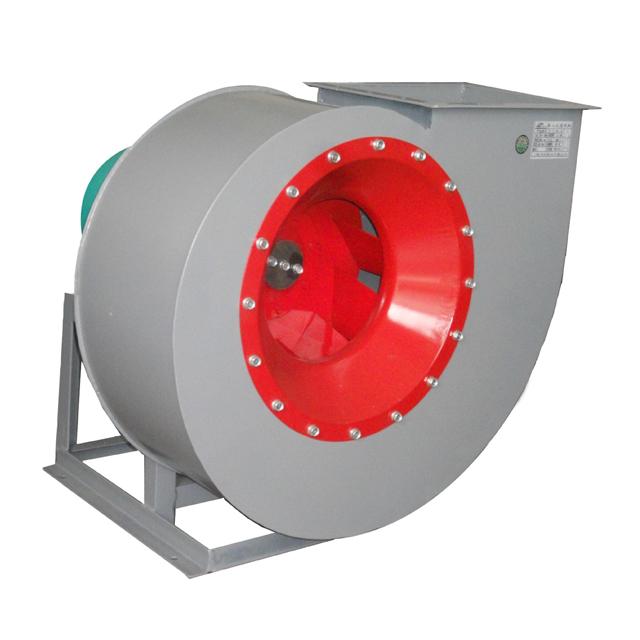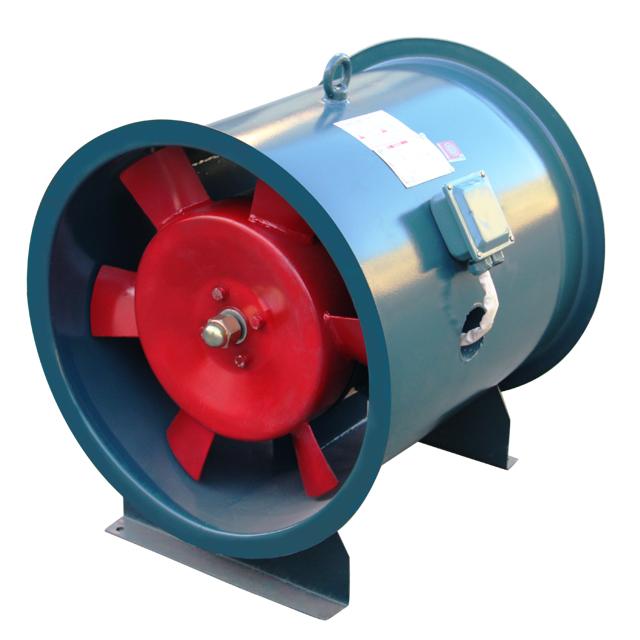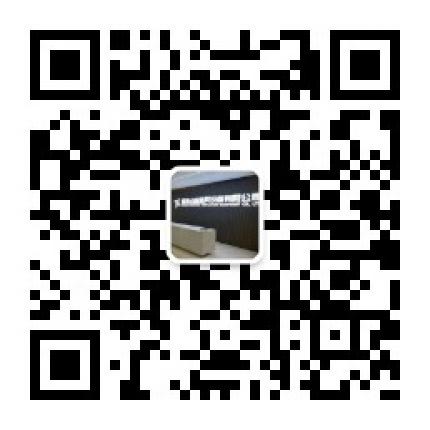Installation and maintenance of air vents
1 Select the appropriate tuyere type
When choosing the appropriate tuyere type, its application scenarios, functional requirements and environmental characteristics must be fully considered. First, according to the size and layout of the space, to determine the size and number of the required tuyere. For example, in a large conference room or exhibition hall, it may be necessary to choose large cyclone vents to ensure uniform air circulation and distant air supply distance. And in small office or bedroom, can choose smaller size disperse flow converter outlet, meet air supply demand already, do not take up too much space again.
Secondly, the type and function of the tuyere are also the key to the choice. Common types of tuyere include cyclone air outlet, diverer tuyere, seam air outlet, etc., each type has its own unique characteristics and applicable scenarios. For example, the cyclone air outlet is suitable for places requiring long-distance air supply and high air supply effect, such as large gymnasium or exhibition hall, while the converter air outlet is suitable for places with uniform air supply and low noise requirements, such as library or hospital.
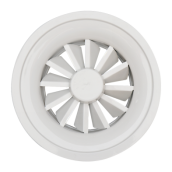
Figure 1 Roling air outlet
When selecting the tuyere, you also need to consider its material and performance. High-quality tuyere material should have corrosion resistance, wear resistance, easy cleaning and other characteristics, to ensure the long-term use effect. At the same time, the performance parameters of the tuyere such as air volume, noise and static pressure also need to be selected according to the actual demand. For example, in situations where low noise is required, choose tuyere with low noise design; in cases with high air volume, tuyere with large air volume is required.
2 Determine the installation location and layout
When determining the installation location and layout of the tuyere, the layout of the indoor space, the airflow demand and the actual situation of the building structure must be fully considered. First of all, the layout of the indoor space should be analyzed, to determine the position of the tuyere should be able to evenly distribute the airflow, to avoid the formation of dead corners and eddy currents. For example, in a large conference room, the tuyere should be located close to the ceiling and a certain distance from the wall to ensure that the airflow can evenly cover the entire space.
Second, the airflow needs should be considered. Different rooms or areas have different requirements for air flow, such as the office needs a more stable air flow, while the restaurant needs a more strong air supply effect. Therefore, when determining the layout of tuyere, the number and location of tuyere should be reasonably set according to the actual demand. For example, in a restaurant, the tuyere can be set above the table to improve the air supply effect.
In addition, the building structure is also an important factor to determine the installation position and layout of the tuyere. When installing the tuyere, avoid conflicts with beams, columns and other obstacles in the building structure, so as to ensure that the installation of the tuyere is firm and does not affect its normal function. At the same time, the connection mode of tuyere and pipeline should also be considered to ensure that the connection is tight and no leakage.
3. Prepare the required materials and tools for the installation
Before the tuyere installation, preparing the required materials and tools are the key to ensure the smooth installation. First, prepare the corresponding mounting bracket and fasteners according to the type and specification of the selected tuyere. For example, for heavy tuyere, it is necessary to choose the bearing capacity bracket, and use high strength bolts and nuts for fixation. In addition, measuring tools, such as measuring tape and horizontal ruler, should be prepared to ensure the accuracy and level of the installation position.
In terms of materials, in addition to the basic installation bracket and fasteners, the tuyere sealing material should also be considered. Seal materials shall be selected to take into account their temperature resistance, corrosion resistance and sealing properties. Common sealing materials are rubber sealing strip, silicone gasket, etc. These materials can effectively prevent the air leakage phenomenon of the tuyere in operation, and improve the air supply effect.
In addition, depending on the installation environment, some special tools and materials may also be required. For example, when outdoor installation, waterproof material and anti-corrosion coating should be prepared to protect the tuyere from the harsh environment. In special occasions, such as hospitals, laboratories, etc., also need to consider the use of antibacterial, mildew and other special materials to ensure the health and safety of tuyere.
When preparing the materials, it is recommended to refer to the installation instructions and drawings provided by the manufacturer to ensure that the selected materials and tools match the tuyere models and specifications. At the same time, you can also consult professional installation personnel or engineers to obtain more specific advice and guidance. Through full preparation and selection, the installation quality and effect of the tuyere can be ensured, laying a good foundation for the subsequent commissioning, testing and maintenance.
1 Step 1: measurement and marking
Measurement and marking is a crucial step before installing the tuyere. First, it is necessary to accurately measure the space size of the installation position to ensure that the size of the tuyere matches the 0 · installation space. For example, for common rectangular vents, the length, width, and the position and size of the mounting hole should be measured. At the same time, considering the particularity of the installation environment, such as wall material, pipeline layout, etc., additional measurement and evaluation are needed.
In the measurement process, the use of professional measuring tools such as tape tape, laser rangefinder, can ensure the accuracy and reliability of data. Moreover, for complex installation environments, 3 D scanning technology or CAD modeling software can be used for more accurate measurements and simulations.
After completing the measurement, the marking work was followed. According to the measurement results, the installation position of the air outlet, the installation position of the bracket and the connection position of the pipe are marked on the wall. When marking, striking colors or symbols should be used so that the corresponding position can be found quickly and accurately during subsequent installation.
It is worth noting that the measurement and marking work is not only related to the installation quality of the tuyere, but also directly affects the operation effect of the whole ventilation system. Therefore, it is important to maintain a rigorous attitude and professional skills when performing this step.
2 Step 2: Install the bracket
Install the bracket is a crucial step in installing the tuyere. The stability and load-bearing capacity of the support directly affect the stability and safety of the tuyere. Therefore, when selecting the bracket, we must ensure that its material is strong, its structure is stable, and it has sufficient load-bearing capacity. Depending on the size and weight of the tuyere, different sizes and models of brackets can be selected to ensure that they can fully support the tuyere.
Before installing the bracket, the installation position should be carefully measured to ensure that the installation position is accurate and level. At the same time, you also need to prepare the required installation materials and tools, such as screws, nuts, wrenches, etc. During the installation process, strictly follow the steps of the installation instructions to ensure that each screw and nut are tightened in place to avoid loosening or falling off.
When installing the bracket, you should also pay attention to the connection between the bracket and the wall or ceiling. Generally speaking, the supports can be fixed to the wall or ceiling by using expansion screws or welding. When choosing the connection mode, consider the material material and bearing capacity of the wall or ceiling to ensure that the bracket can be firmly fixed to the wall or ceiling.
In addition, when installing the bracket, it is also necessary to pay attention to the connection mode between the bracket and the tuyere. Generally speaking, the tuyere can be fixed to the bracket by means of screws or clips. During the connection process, it is necessary to ensure that the connection between the tuyere and the bracket is close and stable to avoid shaking or falling off.
In short, the installation bracket is one of the important steps in the tuyere installation process. Only by ensuring the stability and bearing capacity of the stent, can we ensure the stability and safety of the tuyere. Therefore, during the installation process, it is necessary to strictly follow the steps of the installation instructions, and pay attention to choose the appropriate support and connection mode.
3 Step 3: fix the tuyere
In the installation process of the tuyere, the fixed tuyere is a crucial step, which is directly related to the safety and stability of the tuyere. Before fixing the air outlet, first ensure that the bracket has been installed firmly, and the contact surface with the wall or ceiling is flat. Next, use special fixings, such as screws, clips, etc., to fix the tuyere tightly on the bracket. When fixing, attention should be paid to moderate strength to avoid deformation or damage of the tuyere caused by excessive tightness. At the same time, the connection between the fixing parts and the tuyere outlet and the bracket is firm and reliable.
In practice, the steps to fixing the tuyere may vary by tuyere type and installation environment. For example, for large outlets, multiple fixed points may be used to ensure their stability. In addition, in the installation process, it is also necessary to pay attention to the installation direction of the tuyere, to ensure that it is consistent with the connection direction of the air supply pipe, to ensure the air supply effect.
According to an industry research report, the firmness of fixed tuyere directly affects the service life and safety of tuyere. If the fixation is not firm, the tuyere may be loose and fall off during the long-term use process, and may even lead to damage to the air supply pipeline. Therefore, when fixing the air outlet, you must strictly follow the installation instructions to ensure that each fixed point is firm and reliable.
In addition, the steps of fixing the tuyere also need to consider the requirements of environmental protection and energy saving. For example, when selecting fixparts, products made of environmentally friendly materials should be preferred to reduce the pollution to the environment. At the same time, in the installation process, attention should also be paid to the application of energy saving measures, such as reasonable layout of tuyere position, optimize the design of air supply pipeline, so as to improve the energy efficiency ratio of the whole system.
4 Step 4: Connect the pipe
In the installation process of the tuyere, connecting the pipeline is a crucial step, which is directly related to the operation efficiency and safety of the whole ventilation system. When connecting the pipeline, it is necessary to ensure that the size of the pipeline matches the specification of the tuyere, to avoid the poor airflow or air leakage caused by too large or too small. At the same time, the material of the pipeline should also meet the relevant standards, to ensure its corrosion resistance, high temperature resistance and other performance, to ensure the long-term stable operation of the system.
In practice, we can use professional pipe connection tools and techniques, such as welding, flange connection, etc., to ensure the firmness and sealing of the pipe connection. In addition, when connecting the pipeline, we should also pay attention to the direction and layout of the pipeline to avoid too long, bending or excessive joints, so as to reduce the airflow resistance and improve the air supply efficiency. At the same time, the support and fixation of the pipeline is also a link that can not be ignored, to ensure that the pipeline is installed firmly, to avoid the vibration or displacement in the process of operation.
Taking a large commercial complex as an example, its ventilation system adopts the advanced pipe connection technology, and determines the reasonable pipe size and layout through precise measurement and calculation. When connecting the pipe, high quality pipe materials and professional connection tools are used to ensure the firmness and sealing of the pipe connection. After strict debugging and testing, the ventilation system has shown excellent performance in the actual operation, with high air supply efficiency, low noise and stable operation, which has been highly evaluated by users.
Therefore, when connecting the pipeline, we should not only pay attention to the technical details and operating specifications, but also fully consider the overall performance of the system and user needs.Only in this way, can we ensure the quality and effect of tuyere installation, and provide users with a comfortable, safe and efficient ventilation environment.
1 the opening and adjusting function of commissioning tuyere
The opening and adjustment function of the commissioning outlet is the key step to ensure the normal operation of the outlet system. After the installation is completed, the first step needs to check the opening and closing mechanism of the tuyere carefully. This includes checking the flexibility and smoothness of the tuyere blades to ensure that the blades can open and close freely without jamming. At the same time, the professional measuring tools are used to accurately measure the opening and closing Angle of the tuyere to ensure that it is consistent with the design requirements. Usually, the opening and closing Angle should be between 30° and 90° to meet the different air supply requirements.
In terms of the adjustment function, the debugging personnel need to accurately adjust the air volume, wind speed and air supply direction of the tuyere according to the actual use scenario. For example, in a conference room or office environment that needs to maintain constant temperature and humidity, the air volume of the tuyere can be adjusted to achieve the uniform distribution of indoor temperature. In addition, for the scene requiring directional air supply, such as above the table of the restaurant or in the ward of the hospital, the air supply direction can be adjusted to ensure that the air supply effect is the best.
During debugging, some best practices or standards within the industry can be used as a reference. For example, according to the requirements in the Code for Acceptance of Construction Quality of Building Ventilation and Air Conditioning Engineering, the air volume adjustment range of the tuyere should be within ± 10% of the design air volume to ensure the stability and reliability of the air supply effect.
2. Common problems and solutions in debugging and testing
In the debugging and testing stage of the tuyere, common problems often involve the abnormal opening and adjustment function of the tuyere, and the poor air supply effect. For example, when the tuyere is not open and close smoothly, it may be due to the support is not fixed firmly during installation or there is a foreign body blocking inside the tuyere. For this problem, the solution includes refixing the bracket, cleaning the foreign matter inside the tuyere, and checking whether the tuyere opening and closing mechanism is intact. In addition, the problem of poor air supply effect may be due to the poor pipe connection or the unreasonable design of the air outlet. To solve this problem, it is necessary to ensure that the pipe connection is well sealed, and adjust the tuyere design according to the actual demand, such as changing the Angle of the tuyere or increasing the air supply area.
1 Clean the surface and interior of the tuyere
Cleaning the surface and interior of the tuyere is an important step to ensure the normal operation of the tuyere and extend the service life. During the cleaning process, first close the tuyere system to ensure that the power supply is disconnected to avoid accidents. Next, use a soft cloth or vacuum cleaner to gently remove the dust and debris on the surface of the tuyere, and avoid using too rough cleaning tools to avoid scratching the surface of the tuyere. For the internal cleaning of the tuyere, it is recommended to use professional detergent and tools, such as using a brush with soft hair dipped in the appropriate amount of detergent, gently scrub the inside of the tuyere, to ensure the thorough removal of dust and dirt.
In addition, in the cleaning process, but also need to pay attention to environmental protection and energy saving requirements. Choose environmentally friendly cleaners, avoid the use of cleaners containing harmful chemicals, so as not to cause pollution to the environment. At the same time, in the cleaning process, to reduce the waste of water resources as far as possible, to use water-saving cleaning methods, such as the use of spray detergent, not only to ensure the cleaning effect, but also to reduce water consumption.
In short, cleaning the surface and interior of the tuyere is necessary to ensure the normal operation of the tuyere and extend the service life. Through regular cleaning, it can significantly improve the air supply efficiency of the tuyere, reduce energy consumption, and meet the requirements of environmental protection and energy saving. In practice, it is suggested to choose the appropriate cleaning methods and tools according to the material and use environment of the tuyere to ensure the cleaning effect and the safety of the operators.
2 Check the air outlet connection parts and fasteners
In the daily maintenance of the tuyere, checking the tuyere connector and fasteners is a crucial link. These connections and fasteners are not only related to the stability of the tuyere, but also directly affect the operation efficiency and safety of the whole ventilation system. Therefore, the status of these components should be carefully checked at each maintenance.
First, ensure that all connections are intact and free of rust, fracture or deformation. If any abnormality is found, the new connector should be replaced immediately to ensure the stability of the tuyere. At the same time, the inspection of fasteners can not be ignored. Fasteners such as screws and nuts should be kept tight to prevent the shaking or falling off of the tuyere caused by loosening.
In the inspection process, some simple tools and methods can be used to improve the efficiency. For example, the use of a torque wrench can ensure that the fastener reaches the specified tightening torque to avoid failure due to overtight or overloose. In addition, tools such as a magnifying glass or endoscope can be used to check the interior of the connections and fasteners and identify potential problems and address them in a timely manner.
It is worth noting that the material and specifications of the connections and fasteners are also important factors affecting the performance of the tuyere. When selecting these components, the appropriate materials and specifications should be selected according to the actual requirements of the tuyere and the working environment. For example, in wet or corrosive environments, corrosion-resistant materials should be selected; larger connections and fasteners should be selected.
In short, checking the tuyere connection parts and fasteners is an indispensable part of the daily maintenance of the tuyere. By carefully checking the status of these components, the potential problems can be found in time and take corresponding measures to deal with them, so as to ensure the stability of the tuyere and the normal operation of the ventilation system.
3 Regularly check the function and performance of the tuyere
In the daily maintenance of the tuyere, regular inspection of the function and performance of the tuyere is the key link to ensure the stable operation of the system. This process involves not only the inspection of the opening and closing function of the tuyere, but also the evaluation of the air supply effect. Specifically, the tuyere should be thoroughly inspected at least once a quarter. In the process of inspection, it is necessary to ensure that the opening and closing mechanism of the tuyere is flexible and stuck, the adjustment function is smooth, and can accurately respond to the control signal. Secondly, through the professional anemometer and thermometer and other tools, the air supply effect of the tuyere is quantitatively evaluated to ensure that the air supply speed, temperature and other parameters meet the design requirements.
In the process of inspection, if the tuyere is found abnormal, such as poor opening and closing, adjustment failure or poor air supply effect, it should be troubleshooting and repaired immediately. For example, a large commercial complex found that the air supply effect of some tuyere was poor during regular inspection. After investigation, it was found that the air volume was reduced due to the dust accumulation in the pipeline. By cleaning the pipeline in time, the effect of air supply has been significantly improved.
In addition, in order to ensure the long-term stable operation of tuyere function, data analysis model can be introduced to predict and evaluate tuyere performance. Through the analysis of the historical data, the possible fault type and time node of the tuyere can be predicted, so as to make the maintenance plan in advance and avoid the occurrence of the failure. At the same time, the design and operation parameters of the tuyere can also be optimized according to the data analysis results to improve the overall performance of the system.
In short, the regular inspection of the function and performance of the tuyere is an important measure to ensure the stable operation of the system. Through comprehensive inspection and timely troubleshooting and repair, we can ensure that the tuyere is always in good working condition and provide comfortable and healthy air for the indoor environment.











